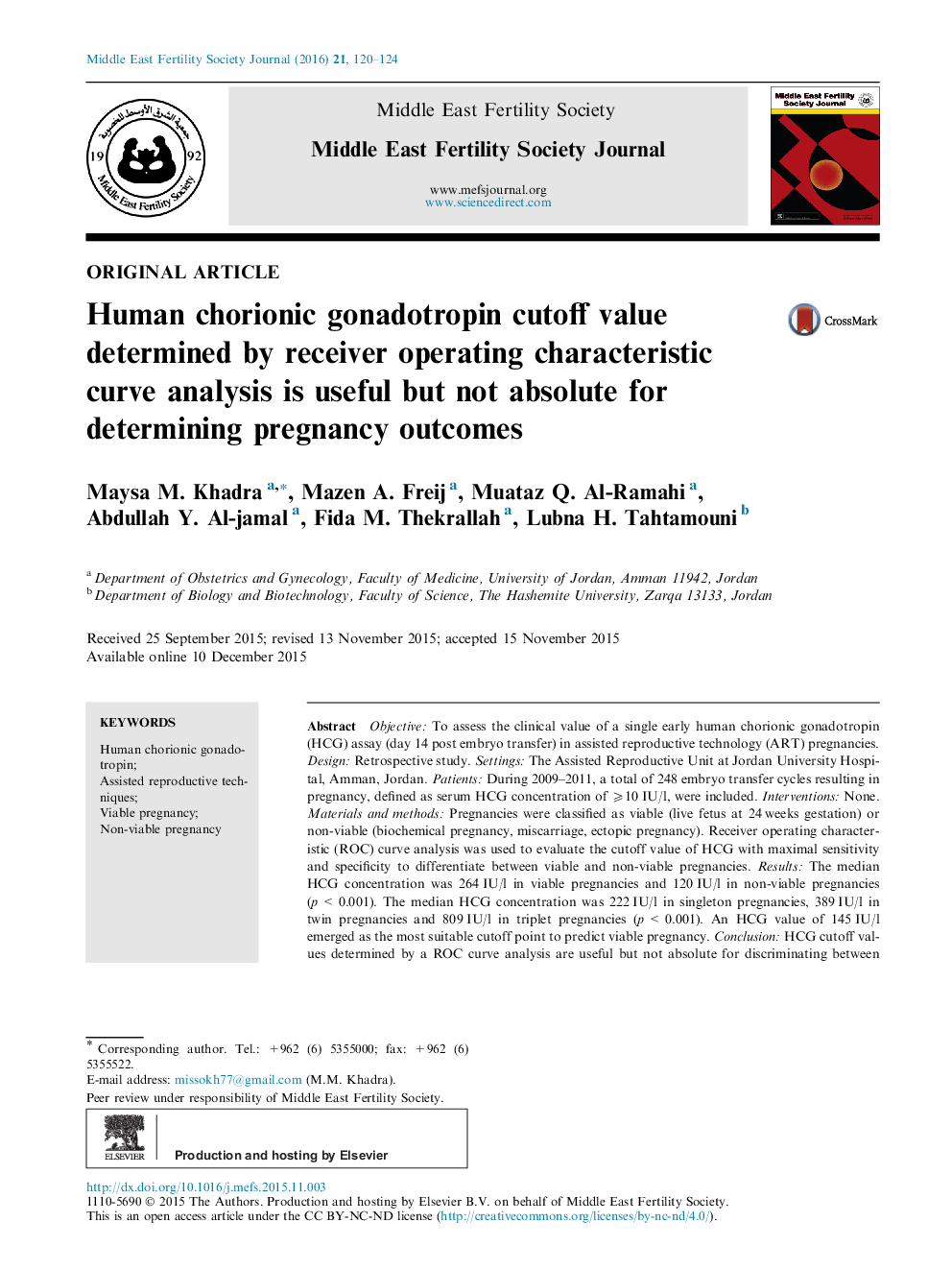| کد مقاله | کد نشریه | سال انتشار | مقاله انگلیسی | نسخه تمام متن |
|---|---|---|---|---|
| 3966058 | 1256134 | 2016 | 5 صفحه PDF | دانلود رایگان |
Objective: To assess the clinical value of a single early human chorionic gonadotropin (HCG) assay (day 14 post embryo transfer) in assisted reproductive technology (ART) pregnancies. Design: Retrospective study. Settings: The Assisted Reproductive Unit at Jordan University Hospital, Amman, Jordan. Patients: During 2009–2011, a total of 248 embryo transfer cycles resulting in pregnancy, defined as serum HCG concentration of ⩾10 IU/l, were included. Interventions: None. Materials and methods: Pregnancies were classified as viable (live fetus at 24 weeks gestation) or non-viable (biochemical pregnancy, miscarriage, ectopic pregnancy). Receiver operating characteristic (ROC) curve analysis was used to evaluate the cutoff value of HCG with maximal sensitivity and specificity to differentiate between viable and non-viable pregnancies. Results: The median HCG concentration was 264 IU/l in viable pregnancies and 120 IU/l in non-viable pregnancies (p < 0.001). The median HCG concentration was 222 IU/l in singleton pregnancies, 389 IU/l in twin pregnancies and 809 IU/l in triplet pregnancies (p < 0.001). An HCG value of 145 IU/l emerged as the most suitable cutoff point to predict viable pregnancy. Conclusion: HCG cutoff values determined by a ROC curve analysis are useful but not absolute for discriminating between viable and non-viable pregnancy outcomes on day 14 after embryo transfer. So it is important to continue routine monitoring of ART pregnancy outcomes.
Journal: Middle East Fertility Society Journal - Volume 21, Issue 2, June 2016, Pages 120–124
